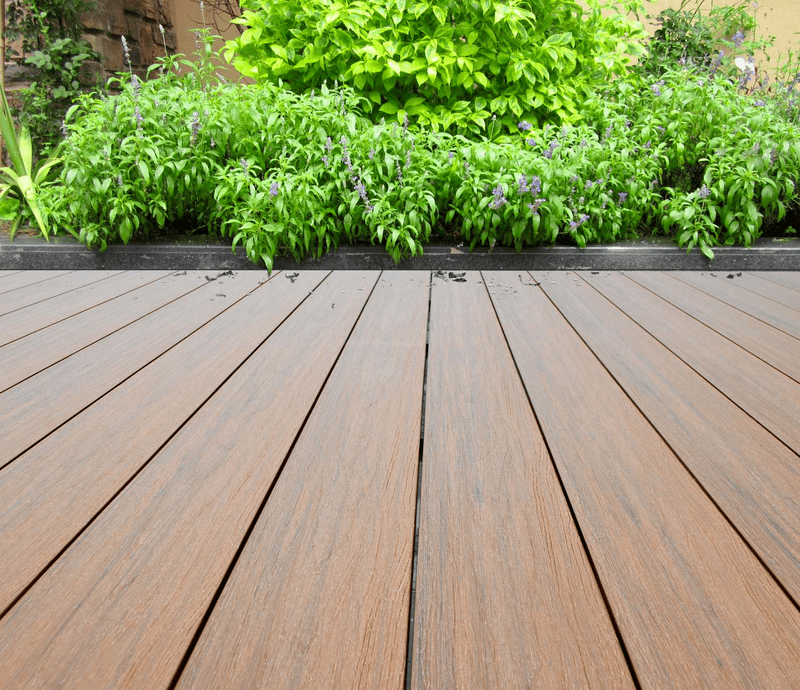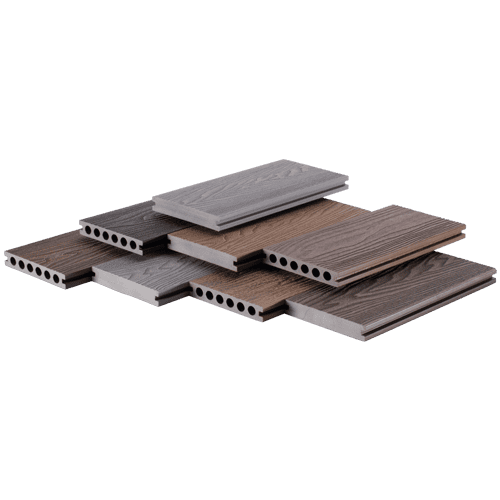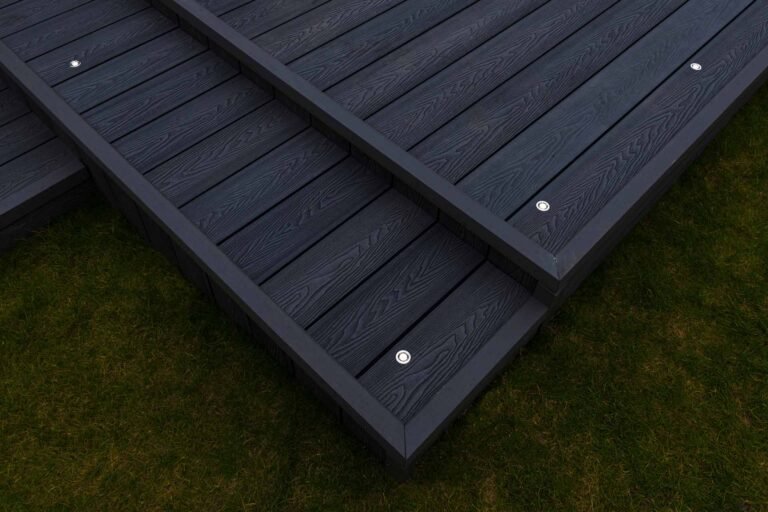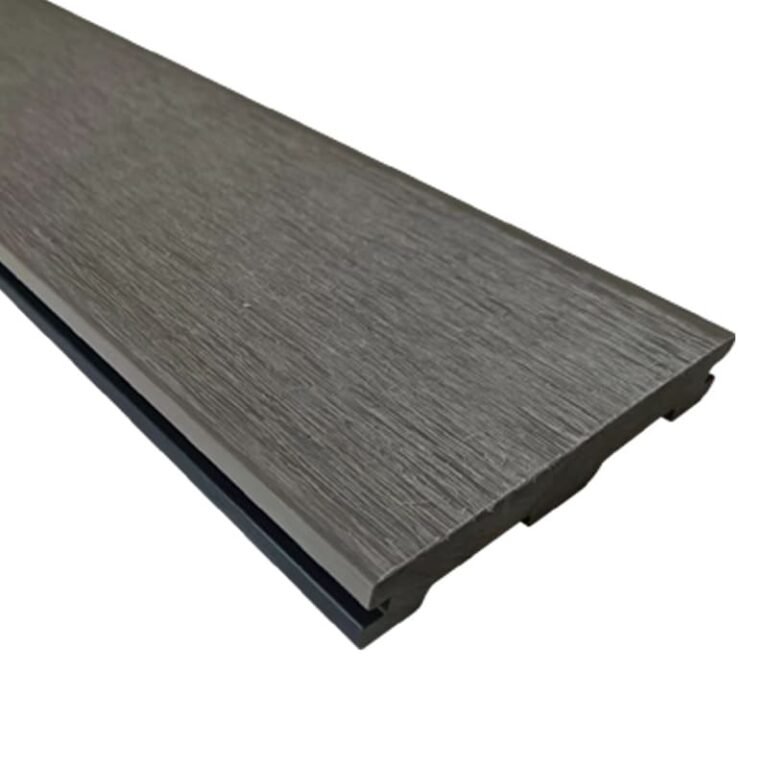Are you tired of the endless cycle of sanding, staining, and sealing your wood deck? Composite decking offers the beauty of wood without the constant, costly maintenance that eats up your time.
Composite decking is a highly durable, low-maintenance building material made from a mix of recycled wood fibers and plastic. It's engineered to resist rot, warping, and insects, making it an excellent long-term alternative to traditional timber for outdoor spaces like patios, balconies, and walkways.
As someone who has been in the WPC industry for over a decade, I've seen composite decking go from a niche product to a mainstream choice for wholesalers and their customers. Business owners like you understand that product reliability is everything. You need to offer materials that not only look good on day one but also perform for years to come, reducing customer callbacks and strengthening your reputation. The shift toward composite is not just a trend; it's a response to a real market demand for smarter, more sustainable building solutions. Let's dive deeper into what makes this material such a compelling choice for businesses and homeowners alike.
What Exactly Goes Into Making a Composite Deck?
Choosing a decking material based on name alone is risky. You know it’s a "composite," but what does that mean for performance? The wrong blend can lead to product issues.
Composite decking is made from a precise blend of about 55-60% recycled wood fibers and 30-35% high-density polyethylene (HDPE)[^1]. The final 10% consists of essential additives for color, UV protection[^2], and stability.
For a distributor, understanding this formula is key to quality control. It’s what separates a premium board from a cheap one that will fail in a few years. The materials we use at Veejoy are carefully selected to create a product that you can sell with confidence. Let's break down these core components.
The Role of Each Component
The strength and durability of composite decking come from how these three main ingredients work together. It's not just a simple mix; it's an engineered fusion.
- Wood Fiber (55-60%): This is the heart of the product. We use fine wood flour, often reclaimed from sawmills and furniture factories. This gives the boards their natural, wood-like appearance and texture. Using recycled fiber is also a key part of our commitment to sustainability.
- HDPE Plastic (30-35%): High-Density Polyethylene is the shield. This recycled plastic, sourced from items like milk jugs and bottles, encapsulates the wood fibers. It protects them from moisture, which prevents rot and decay. It also provides excellent resistance to insects.
- Additives (10%): This is the secret sauce. This small percentage makes a huge difference in performance and longevity.
| Additive Type | Purpose | Benefit for Your Customers |
|---|---|---|
| UV Inhibitors | Protects the board from sun damage and fading. | The deck's color stays vibrant for many years. |
| Color Pigments | Provides consistent, rich color throughout the board. | No need for painting or staining, ever. |
| Binding Agents | Helps the wood and plastic fuse together permanently. | Creates a stronger, more stable board that won't delaminate. |
| Anti-Fungals | Prevents mold and mildew from growing on the surface. | Easier to clean and safer for families. |
Knowing this helps you explain to your customers—the builders and contractors—why they are buying a superior, technically advanced product, not just "plastic wood."
How Long Can You Realistically Expect Composite Decking to Last?
Customers worry about investing in a deck that might not stand the test of time. Promising longevity is easy, but backing that promise up with facts is what builds trust.
A quality composite deck can easily last 25 to 30 years, and sometimes longer with basic care. The manufacturer's warranty, however, is different and typically covers defects for a period of 10 to 25 years. It’s important to distinguish between lifespan and warranty.
In my experience, honest communication about lifespan and warranty is crucial for managing customer expectations. When a distributor like you can clearly explain this, it reinforces your credibility. A warranty is our promise against manufacturing faults. The actual lifespan of the deck depends on several other factors that you and your customers can control. A well-made and properly installed composite deck is a long-term asset. Let's explore what ensures that longevity.
Factors That Define a Deck's Lifespan
The durability I mentioned isn't just a number we pull from thin air. It’s the result of quality manufacturing and proper handling from our factory to the final installation.
Quality of Materials
It all starts with the recipe we discussed earlier. A deck made with high-grade HDPE and effective UV inhibitors will resist fading and cracking far better than a budget-friendly option that cuts corners on additives. This is why we insist on ISO-certified production processes and rigorous testing for all our products.
Correct Installation
This is perhaps the most critical factor. Even the best decking material will fail if installed incorrectly. Key installation points include:
- Proper Gapping: Composite boards expand and contract with temperature changes. Leaving the correct gaps between boards is essential to prevent buckling.
- Adequate Ventilation: There must be enough airflow under the deck to keep the space dry and prevent moisture buildup.
- Right Fasteners: Using the recommended hidden fasteners or screws ensures a secure fit without damaging the boards.
As a supplier, providing clear installation guides to your construction clients is a huge value-add.
Climate and Environment
A deck in the sunny, dry climate of Spain faces different challenges than one in the UK with its frequent rain and freeze-thaw cycles. Our products are engineered and tested to perform in diverse international climates, but extreme weather will always be a test of a material's endurance.
Is Composite Decking Truly a Better Choice Than Traditional Wood?
The classic debate: wood versus composite. Your customers are always making this comparison. Recommending the wrong material for their specific needs can lead to disappointment and strain your business relationship.
From a long-term maintenance and environmental perspective, composite decking is often a better choice. It uses recycled content and eliminates the yearly cost and labor of staining and sealing that wood requires, providing superior value over its lifespan.
I've worked with building material wholesalers for years, and a common story I hear is about their shift away from wood. It’s not because wood is a bad product, but because their customers were tired of the upkeep. Composite decking solves this problem directly. It’s designed for modern homeowners who want to spend their weekends enjoying their deck, not working on it. Of course, the "better" choice depends on priorities, but when you compare them side-by-side, the practical advantages of composite become very clear.
A Head-to-Head Comparison
To help you and your sales team articulate the differences, here is a straightforward comparison. This is the kind of information that helps a contractor or architect make a confident decision.
| Feature | Composite Decking | Traditional Wood Decking (e.g., Pine) |
|---|---|---|
| Upfront Cost | Higher | Lower |
| Maintenance | Low (periodic sweeping & washing) | High (annual staining, sealing, or painting) |
| Long-Term Cost | Lower (no maintenance materials or labor) | Higher (costs of stains, sealers, brushes add up) |
| Durability | Resists rot, insects, warping, and splinters | Susceptible to rot, insects, warping, and splinters |
| Appearance | Consistent color and texture, won't fade unevenly | Natural grain, but weathers and fades without upkeep |
| Sustainability | Made from recycled wood and plastic | Harvested from forests (look for FSC certification) |
The most powerful argument here is maintenance. For your business, selling a low-maintenance product means happier end-users and fewer complaints down the line. It transforms the conversation from a simple product sale to providing a long-term, hassle-free outdoor living solution.
Is Composite Decking Too Expensive for Most Projects?
Sticker shock is real. The higher upfront cost of composite decking can make some buyers hesitate, especially when comparing it directly to pressure-treated pine. This is a common hurdle in the sales process.
While composite decking is more expensive to buy initially, its total cost of ownership is often lower. You save significant money over the years by avoiding the ongoing expenses of stains, sealers, and labor required to maintain a wood deck.
Framing the price correctly is everything. It's not about being a "cheaper" option today; it's about being a "smarter" investment for tomorrow. I always encourage my partners to walk their customers through the long-term math. When people see how quickly the maintenance costs of wood add up, the initial price of composite starts to look much more reasonable. It’s about selling value and peace of mind, not just deck boards.
Breaking Down the True Cost: An Investment, Not an Expense
Let’s look at a practical example. This is a simple cost breakdown that you can adapt and show to your clients to illustrate the return on investment (ROI).
A 15-Year Cost Scenario (for a 20 sq. meter deck)
The numbers below are estimates, but they clearly show the trend.
-
Initial Purchase & Installation:
- Wood Deck: €1,500
- Composite Deck: €3,000
-
Annual Maintenance Cost for Wood:
- Stain, sealer, brushes, etc.: €150
- Labor (or your own time): €200
- Total Annual Wood Maintenance: €350
Total Cost Over 15 Years
| Year | Wood Deck Total Cost | Composite Deck Total Cost |
|---|---|---|
| Year 1 | €1,850 (€1500 + €350) | €3,000 |
| Year 5 | €3,250 (€1500 + 5*€350) | €3,000 |
| Year 10 | €5,000 (€1500 + 10*€350) | €3,000 |
| Year 15 | €6,750 (€1500 + 15*€350) | €3,000 |
As you can see, the total investment in the wood deck surpasses the composite deck around Year 5. After that, the composite deck becomes the more economical option, saving the owner thousands over its lifespan. This is a powerful financial argument that shifts the conversation from price to value.
Conclusion
In short, composite decking is a durable, sustainable, and smart alternative to wood. Though its initial price is higher, its low maintenance needs make it a better long-term investment.
---
[^1]: Understand the properties and applications of HDPE, a key component in composite decking.
[^2]: Find out how UV protection enhances the longevity and appearance of decking materials.








